The mesmerizing beauty of the northern lights is high on the bucket list for many, and there’s nowhere more ideal to experience this natural wonder than Canada.
The country boasts optimal conditions for photographers and stargazers to see the awe-inspiring aurora borealis in person.
This article helps reveal the science behind these multicolored celestial shows, as well as why Canada, is the best place to see them, and where and when you can watch them.
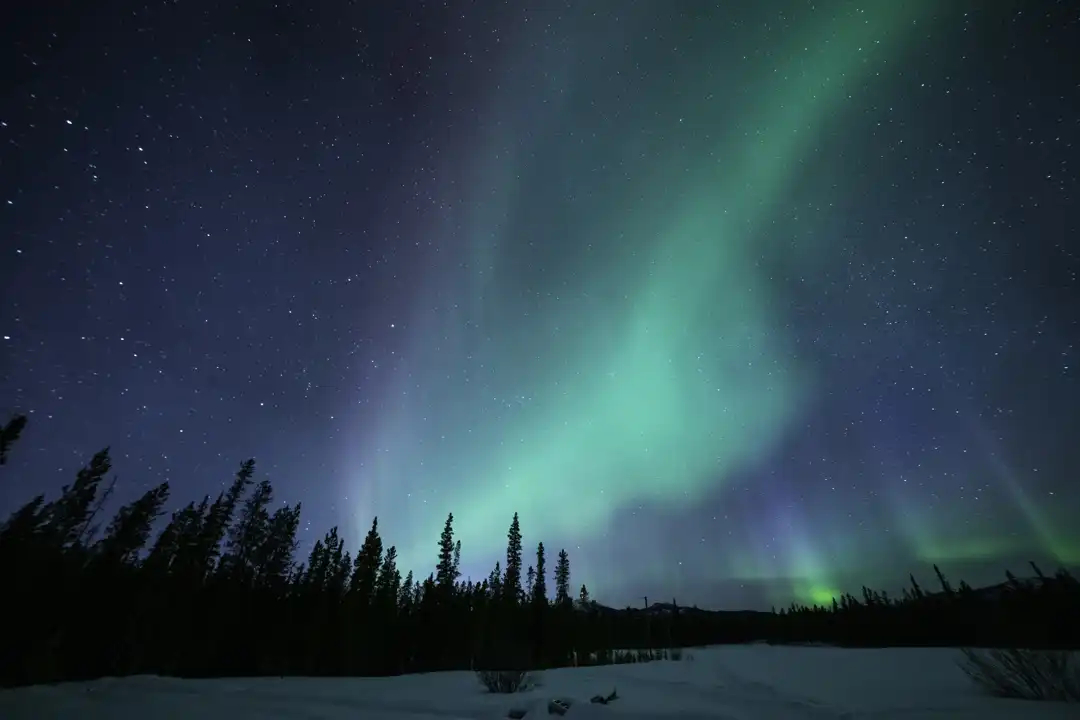
What Are the Northern Lights
What Are the Aurora Borealis?
The Aurora Borealis — commonly known as the northern lights — is like nature’s very own light show.
Imagine glistening lights swaying and swirling under night’s cover, streaking the midnight sky with shades of green, purple, red, and blue.
What Causes the Aurora Borealis?
The northern lights are caused when solar winds sent from the sun hit Earth’s magnetic field/ atmosphere.
They are the colorful product of the Grand Central Station of charged particles that protects our planet.
We would all love to have an aurora every night, but solar activity is random and you just can’t predict it.
Can the Aurora Borealis Be Seen in Canada?
Yes absolutely, you can see them in Canada. Since the country is so far north, it has some of the best views.
The “Auroral Oval,” the area where they are commonly seen, stretches over a large part of northern Canada, so you can witness the beauty of an aurora in the Arctic.
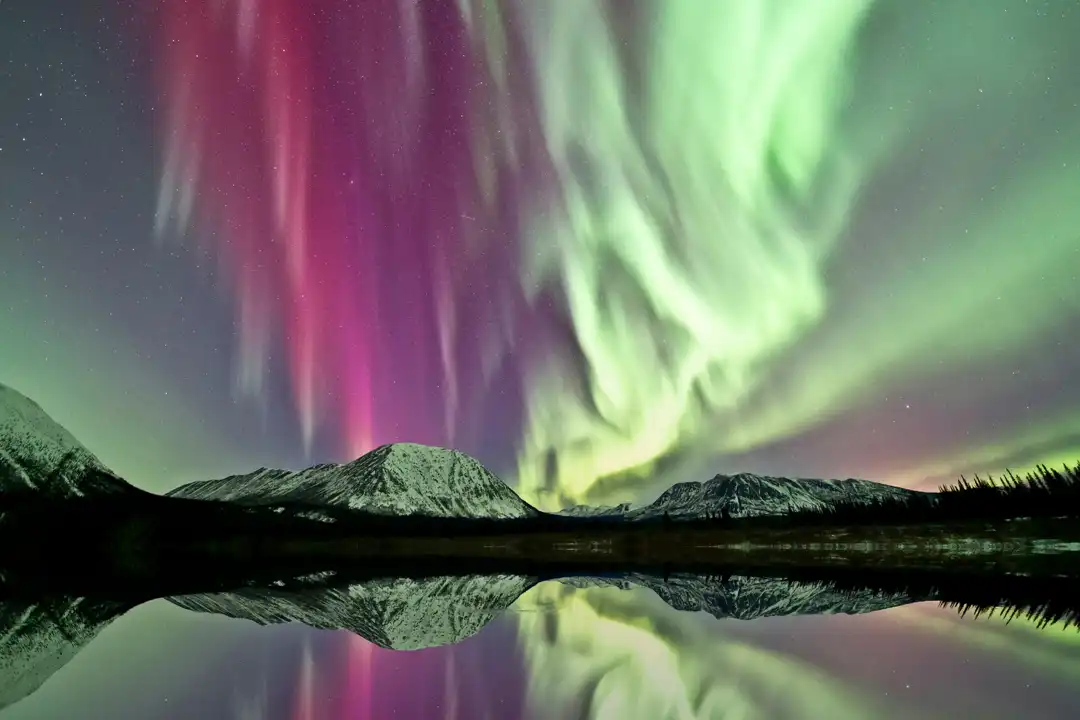
Best Time to See the Northern Lights
Seasonal Guide
The ideal time to see the aurora borealis in Canada is during the late fall and early spring, usually from September to April.
This is when visibility is best due to long, dark nights.
December and February, when the nights are longest and the skies are clear, are some of the best months.
Though it might be freezing out, the amazing natural fireworks are worth it.
Time of Night
If you’re planning to see the northern lights, the time you see them is very important. Oftentimes the best times are between 10 p.m. and 2 a.m.
It’s during these times that the sky is darkest and the contrast is the greatest. The lights are at their most intense during this period and are quite the spectacle.
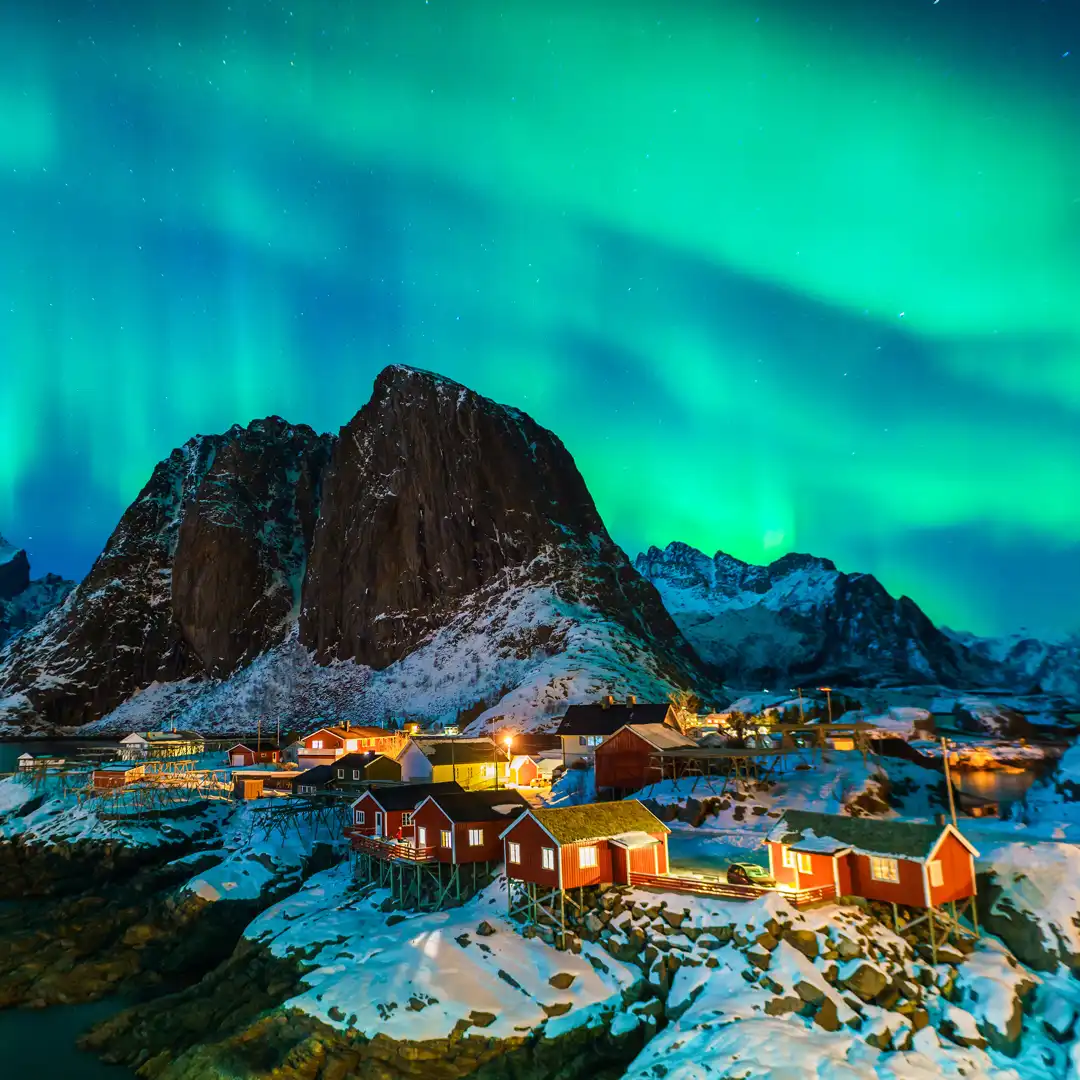
Top 7 Places to See the Northern Lights
1. Yukon
Yukon is an amazing place to go to see the northern lights.
In Whitehorse and at the incredible Kluane National Park, you’re in some of the darkest sky regions for stellar aurora viewing.
This gives you picturesque landscapes in which to see the light show — it’s almost like being painted in green and purple.
During the day, you can get out into the wild, and at night, you can sit back to take in those wondrous lights.
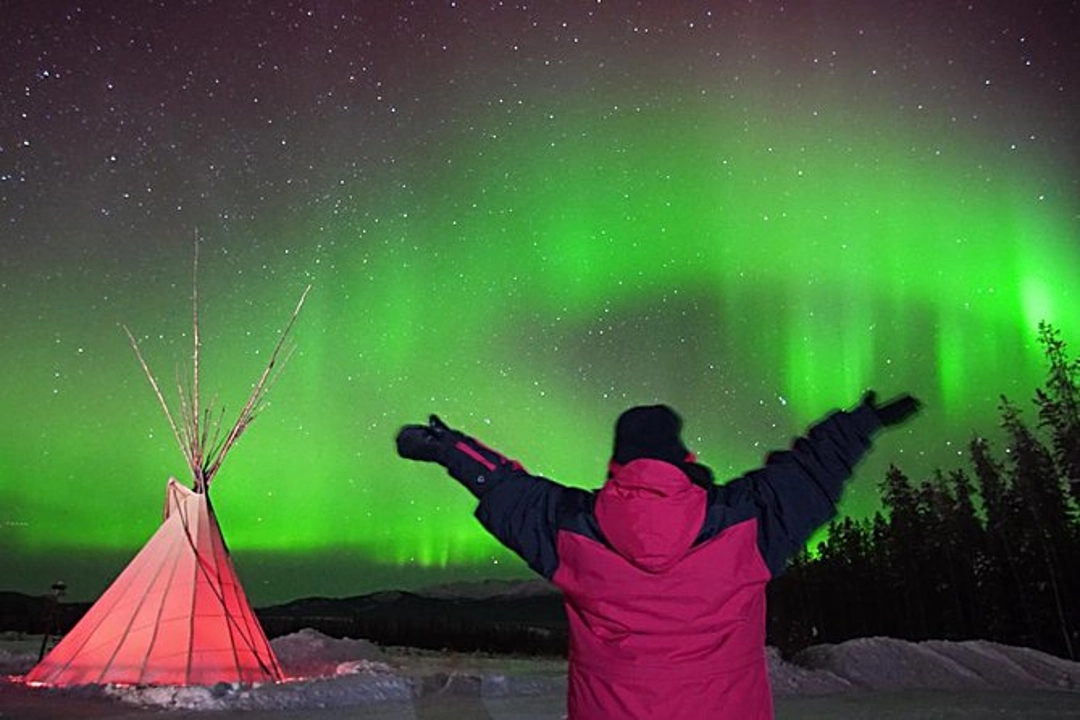
2. Northwest Territories
Known as the “Aurora Capital of North America,” Yellowknife lives up to its name. The environment here makes for some excellent northern lights viewing.
With clear skies and not much light pollution you should be able to see some stunning lights from the comfort of your accommodation.
There are a lot of tours and activities offered in town too, all with the goal of seeing the lights.
3. Nunavut
Nunavut is one of the most remote and unspoiled territories to view the northern lights in.
Once again, you are heading away from light pollution and out into the tranquil wilderness where you can really experience the wild.
The aurora in Nunavut isn’t often interrupted and can fill up the entire sky, creating an unimaginable display.

4. Manitoba
Churchill, Manitoba is a can’t-miss destination, especially since it’s the easiest place to see the northern lights mixed with wild polar bears and beluga whales.
It shows off a lot of what makes nature diverse in just one destination. The town is located directly underneath the Auroral Oval so you can expect regular aurora borealis sightings.
5. Alberta
Alberta is also home to the Dark Sky Preserves Jasper National Park and Banff.
These are incredibly beautiful regions loaded with epic scenery that serves as the ideal canvas for some northern lights.
Having the Rockies rise up around you makes the auroras all the more trippy and awe-inspiring.
When you’re not hiking by day or stargazing by night, you’re simply experiencing the wonder of nature.
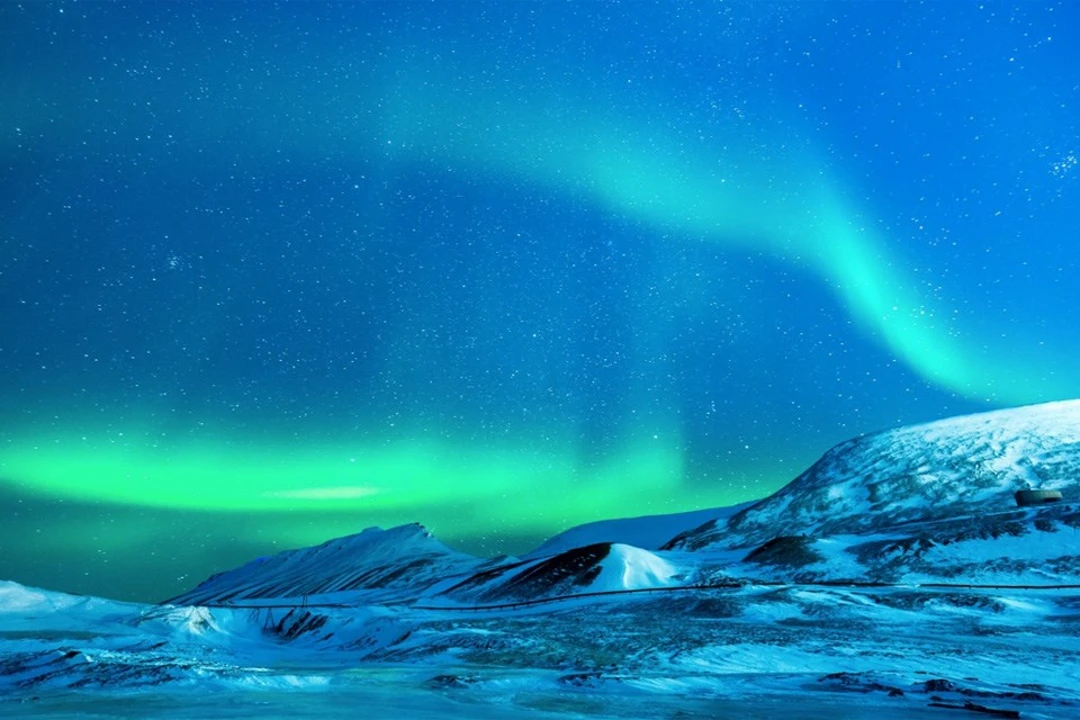
6. Saskatchewan
In Saskatchewan, Grasslands National Park isn’t just a land of big skies; it’s also a designated dark-sky preserve, making it a great place to see the aurora borealis.
The place is never crowded. Once night falls, you’re truly alone — just you, the open prairie land, and the dancing lights above.
It’s such a peaceful area with so much natural beauty and wildlife that it’s the perfect setting to watch the northern lights.
7. Quebec and Ontario
There are a few towns in northern Quebec and Ontario where you have a good chance to see the northern lights
In a few, you even can spot them from directly in town, provided the light pollution is low.
They offer the perfect amount of wilderness and amenities. Head out into the wilderness for the best shots of the aurora or stay in a small town and watch it from there.
There is a good mix of cultural experiences and natural beauty in the province to make it a stop on any aurora-chasing trip.
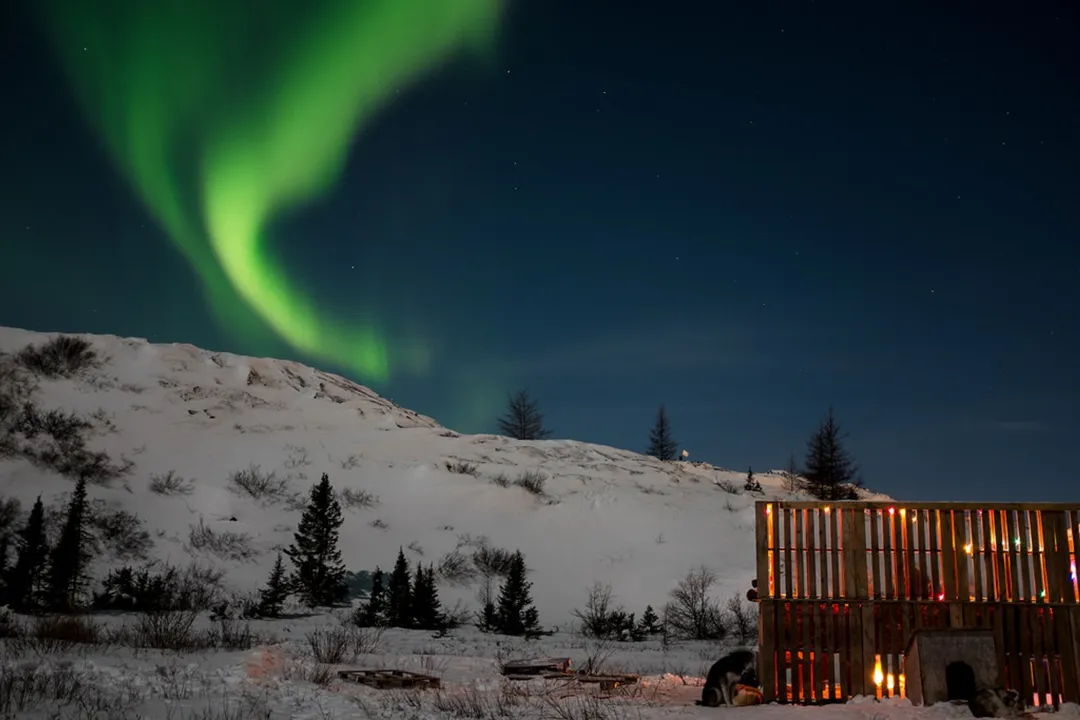
5 Things to Do While Seeing the Northern Lights
1. Dog Sledding, Snowshoeing, and Cross-Country Skiing
Experience the excitement of dog sledding and ride down snow-covered trails while following the sparkly northern lights.
Snowshoeing lets you go at a slower pace and you can wander through the quiet woods and wide-open fields as the lights twist overhead.
If you prefer speed, enjoy some cross-country skiing. It’s exercise in the most stunning of environments.
Pairing any of these activities with aurora viewing is an experience you won’t forget.
Note:
Usually, you can rent the gear. It is also another area where a guide can greatly enhance your time.
Just remember to bundle up and enjoy the peace and quiet of Canada in the winter.
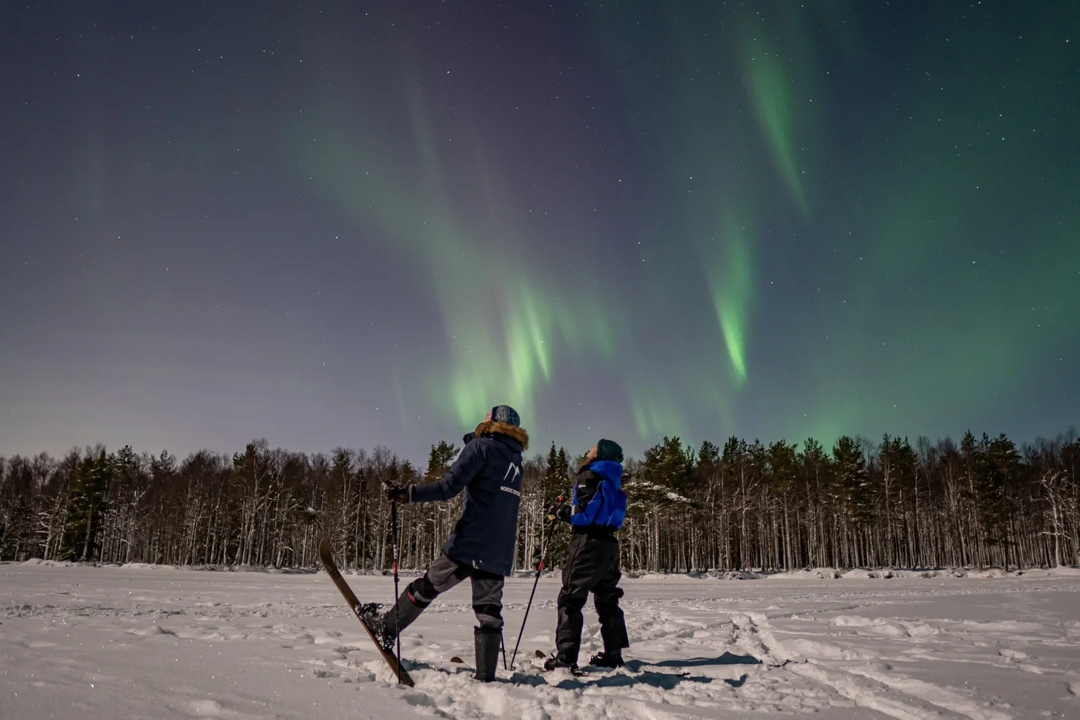
2. Visiting Indigenous Cultural Centers and Learning Local Stories About the Aurora
This is a chance to y style experience and learn about the connection between the northern lights and Indigenous practices.
Note:
A lot of centers offer guided tours so that you can learn. You can learn a lot more about the land, its culture, and history by participating.
Enjoying Hot Springs
After a night of aurora watching, the only activity that can rival that experience is soaking in some hot springs!
One of the most popular places to do that is at Takhini Hot Springs in the Yukon.
Here you can lounge in the warm waters and look up at the lights. The steam mixing with the cold air around you is a strangely wonderful feeling.
Most stay open until late, which makes them ideal for viewing the northern lights at night.
A few of the hot springs also have massage services you can use to give you that extra touch of pampering.
Staying in Glass-Domed Igloos or Wilderness Cabins for Immersive Experiences
Whether you’re looking to sleep in a glass-domed igloo, a pristine wilderness cabin, or a rustic and remote lodge, Canada offers plenty of aurora-viewing accommodation.
The accommodations are really comfortable too. And they keep you nearby, so you can better experience the magic of the auroras.
Note:
These places fill up quickly, too, so it’s best to be proactive.
They range from basic to luxurious in what they offer, but, either way, they’re a charmed way to take the northern lights without freezing to death.
Winter Festivals in Northern Towns
A lot of the small towns in the north have a winter festival–to celebrate the winter and the incredible lights that it brings.
There will be local music and food, art, and maybe even nightly view ins of the aurora.
Joining these festivals lets you experience life up north and get a sense of the community here.
Note:
You need to know what's going on in advance. Festivals are happening everywhere! It’s a great way to meet people and locals.
There are things like ice sculpting, night markets, and more.
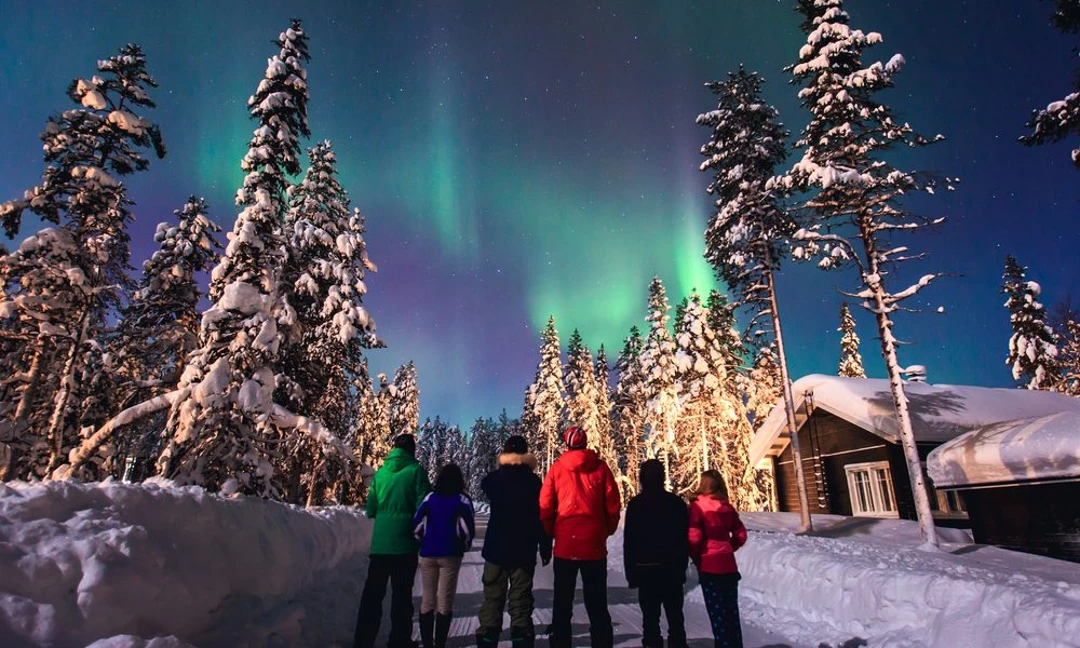
Practical Tips for Aurora Travelers
Clothing
Dress warmly, in layers that can trap heat. Make sure your boots are insulated, as you lose heat quickly through your feet when they get cold.
Gloves are essential as well as shielding your face from the wind chill.
Packing List
Don’t forget your camera — you’ll definitely want to photograph the northern lights.
Bring double the batteries you think you need — they die super fast in the cold. And bring some snacks while you’re at it, as well as a thermos with a hot drink to keep warm.
Travel Logistics
Traveling to remote locales such as Yellowknife, Whitehorse, or Churchill takes a bit more planning.
You’ll most likely have to fly to your destination, but book as far in advance as possible. Planes can fill up fast during the peak aurora times.
Public transportation is limited in some of these areas, so you may want to rent a car so you can have the flexibility to explore.
Budget Considerations
Not only will you need to pay for tours, but you will also need to pay for accommodation, and maybe even other activities too.
Northern tours are often more expensive as they require specialized equipment and guides.
There are hostels that cater to travelers on a budget and luxury lodges where money is no object and even during the high season you may just be surprised by the price.
Safety
If you are stepping out into any of the back country hiking locations, there is always a chance you will run into wildlife like bears.
And always be sure you’re ready for how remote some of these locations are with maps and a charged phone.
If something goes wrong, just having a plan in place will add another level of safety.
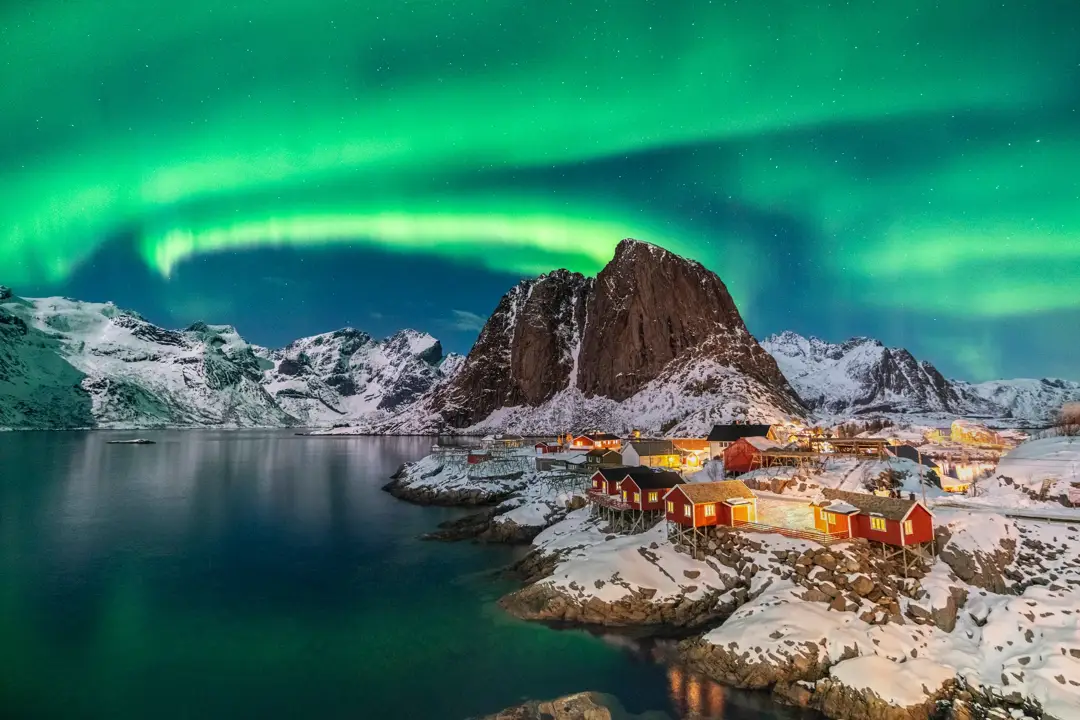
FAQ
1. What is the best way to photograph the Northern Lights?
Bringing a DSLR camera along with a tripod is the best equipment for northern lights photography.
Put your camera in manual mode and use a low aperture and long exposure to get the best shots.
2. Are there any apps to help predict aurora activity?
There area. Numerous apps including My Aurora Forecast and Northern Lights Aurora Alerts monitor solar and geomagnetic activity to forecast the northern lights and even send push notifications when an aurora, based on your current location, will be visible.
3. What are some other natural phenomena to watch out for?
Besides observing the Northern Lights, meteor showers can be seen often too. The Geminids and the Perseids are the two most popular yearly showers.
In the day time, keep an eye out for sun halos, which are caused by ice crystals that form rings around the sun.
4. Can I view the Northern Lights from my vehicle?
Yes, is where a lot of people sit, warm and cozy, but please, if you do this, park in a safe, dark place free of light pollution and noise.
Do not trespass on private property. Respect the land and follow guidelines.
5. Are there northern lights occurring during the daytime?
Sure, auroras happen constantly — it’s just that normally you can’t see them — the light isn’t bright enough to be visible in the sunlight.
Conclusion
Canada is one of the best countries in the world to see the northern lights.
Because it has wide open spaces and very few big cities and light pollution sources, it’s an ideal place to experience this natural phenomenon.
So, get out there and book that ticket to Canada and see the auroras.
The trip offers you so much more than just the lights and is an enthralling cultural and adventure experience.
